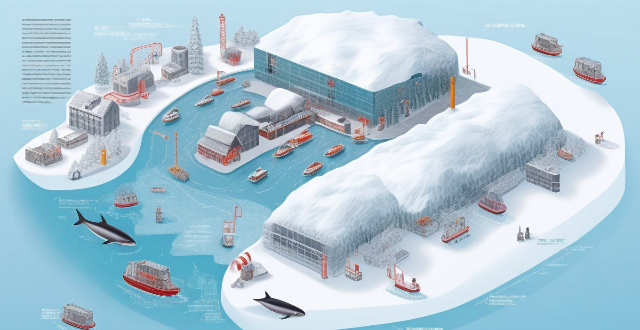The article discusses the various impacts of climate change on the environment, including rising temperatures leading to melting glaciers and ice sheets, changes in precipitation patterns causing droughts and extreme rainfall events, and extreme weather events such as heat waves and hurricanes. It also highlights the loss and fragmentation of habitats due to range shifts and coral reef bleaching, as well as the loss of biodiversity through direct effects like species extinction and population declines, and indirect effects like food web disruptions and disease spread. The article emphasizes the need for urgent action to reduce greenhouse gas emissions and implement adaptation strategies to mitigate these impacts on our planet's ecosystems.

The Impact of Climate Change on the Environment
Climate change is one of the most pressing environmental issues facing our planet today. It refers to the long-term alteration in global climate patterns, primarily caused by human activities such as burning fossil fuels and deforestation. These changes have far-reaching consequences for the environment, affecting ecosystems, wildlife, and human societies alike. In this article, we will explore how climate change affects the environment in various ways.
Rising Temperatures
The Earth's average temperature has been steadily increasing over the past century due to the buildup of greenhouse gases in the atmosphere. This rise in temperature has several implications for the environment:
Melting Glaciers and Ice Sheets
- Loss of Freshwater Reserves: As glaciers and ice sheets melt, they release freshwater into the oceans, reducing the reserves of freshwater available for drinking, agriculture, and other uses.
- Sea Level Rise: The melting ice also contributes to sea level rise, which can lead to coastal flooding and erosion, threatening coastal ecosystems and human settlements.
Changes in Precipitation Patterns
- Droughts: Some regions may experience prolonged periods of drought, leading to water scarcity and impacting agricultural productivity.
- Extreme Rainfall Events: Other areas may see an increase in heavy rainfall events, causing floods that damage infrastructure and disrupt ecosystems.
Extreme Weather Events
- Heat Waves: More frequent and intense heat waves can stress wildlife, damage crops, and pose health risks to humans.
- Hurricanes and Typhoons: Warmer ocean temperatures can intensify these storms, increasing their destructive power and potential impact on coastal and island communities.
Habitat Loss and Fragmentation
Climate change can lead to the loss and fragmentation of habitats, affecting biodiversity and ecosystem services:
Range Shifts
- Altitude Shifts: As temperatures rise, some species may move to higher altitudes to find cooler conditions, potentially leading to competition with existing species for resources.
- Latitude Shifts: Similarly, species may move toward the poles in search of suitable habitats, which can disrupt local ecosystems and introduce new predators or competitors.
Coral Reef Bleaching
- Ocean Acidification: As carbon dioxide dissolves in seawater, it forms carbonic acid, making the ocean more acidic and harmful to coral reefs and other marine life.
- Increased Water Temperatures: Higher water temperatures can cause coral bleaching, where coral expels its symbiotic algae, losing its main source of food and turning white. This can lead to coral death and the collapse of entire reef systems.
Biodiversity Loss
Climate change accelerates the rate of extinction for many species by altering their habitats and disrupting ecological interactions:
Direct Effects
- Species Extinction: Some species may not be able to adapt quickly enough to changing conditions, leading to their extinction.
- Population Declines: Even if species do not go extinct, their populations may decline significantly, reducing genetic diversity and resilience within ecosystems.
Indirect Effects
- Food Web Disruptions: Changes in the distribution and abundance of prey species can affect predator populations, leading to cascading effects throughout the food web.
- Disease Spread: Warmer temperatures can expand the range of disease-carrying organisms like mosquitoes and ticks, posing threats to wildlife and human health.
In conclusion, climate change affects the environment in numerous ways, from rising temperatures and altered precipitation patterns to habitat loss and biodiversity decline. Addressing these challenges requires urgent action to reduce greenhouse gas emissions and implement adaptation strategies to mitigate the impacts on our planet's ecosystems.